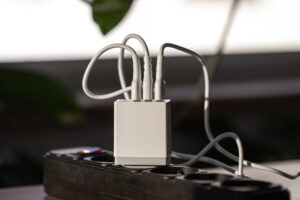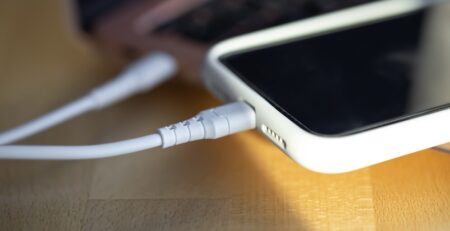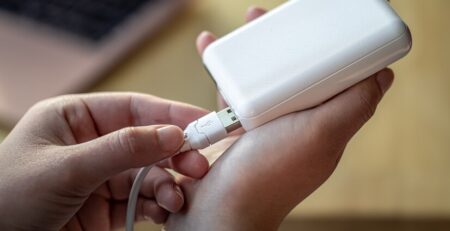The Evolution of Charging: From Wall Chargers to Wireless
Are you tired of dealing with tangled cords and limited outlets? Discover the fascinating journey of charging technology as it evolves from traditional wall chargers to the convenience of wireless charging.
This article explores the rise of wall chargers, the emergence of portable chargers, the introduction of fast charging, and the advent of inductive charging.
Join us as we delve into the past, present, and future of charging technology. Say goodbye to cords and embrace the wireless revolution!
The Rise of Wall Chargers
In this article, you’ll explore the rise of wall chargers as a crucial component in the evolution of charging technology.
Wall chargers have become an essential part of our daily lives, enabling us to effortlessly power up our devices. With the advent of smartphones and other portable gadgets, the need for efficient charging solutions became evident. Wall chargers quickly emerged as the go-to option, providing a convenient and reliable way to recharge our devices. They’re compact, portable, and easy to use, making them a popular choice for both home and travel.
Moreover, wall chargers have undergone significant advancements, with the introduction of fast charging technologies that can power up our devices in no time. As we continue to rely on our devices, wall chargers remain an indispensable tool in keeping our gadgets juiced up and ready to go.

The Emergence of Portable Chargers
As you explore the evolution of charging technology from wall chargers to wireless, you’ll now delve into the emergence of portable chargers, offering a convenient solution for powering up your devices on the go.
Portable chargers, also known as power banks or battery packs, have become increasingly popular in recent years. These compact and lightweight devices are equipped with rechargeable batteries and can store energy for later use. They come in various capacities, ranging from small ones that can fit in your pocket to larger ones that can charge multiple devices multiple times.
Portable chargers typically have USB ports or wireless charging capabilities, allowing you to easily connect your devices and recharge them anywhere, anytime. With the emergence of portable chargers, you no longer have to worry about running out of battery while on the move.
The Introduction of Fast Charging
With the emergence of portable chargers, you can now experience the convenience and efficiency of fast charging for your devices on the go. Fast charging technology has revolutionized the way we power up our devices, allowing us to quickly and efficiently recharge them in a matter of minutes.
This technology uses higher voltage and current to speed up the charging process, reducing the time it takes to get your device up and running again. Whether you’re in a rush to catch a flight or simply can’t wait to use your device, fast charging ensures that you won’t have to wait long.
As more and more devices support fast charging, it has become an essential feature for those seeking a quick and convenient charging solution.
The Advent of Inductive Charging
Now let’s delve into the next phase of charging technology: embracing the convenience of inductive charging.
Inductive charging, also known as wireless charging, has revolutionized the way we power our devices. With this technology, you no longer need to fumble with tangled cords or search for an available wall socket. Simply place your device on a charging pad or dock, and the power is transferred wirelessly.
Inductive charging works by using an electromagnetic field to transfer energy between two objects. The charging pad or dock contains a coil that generates the field, while your device has a coil that receives the energy.
This method of charging isn’t only convenient, but it also eliminates the wear and tear that often occurs with traditional charging cables. Say goodbye to the hassle of plugging and unplugging, and embrace the simplicity of inductive charging.
The Future of Wireless Charging
You will witness an exciting evolution in wireless charging as new advancements continue to enhance its convenience and efficiency.
The future of wireless charging holds great promise, with researchers and engineers working tirelessly to improve the technology. One area of focus is increasing the charging speed. Currently, wireless charging is slower compared to traditional wired charging methods. However, with the development of higher power transfer rates and advanced charging protocols, you can expect wireless charging to become faster and more efficient in the near future.
Another aspect being explored is the ability to charge multiple devices simultaneously. Imagine being able to charge your smartphone, smartwatch, and wireless earbuds all at once, without the need for multiple charging pads or cables. This would greatly simplify and streamline the charging process.
Additionally, there are efforts to extend the range of wireless charging, allowing you to charge your devices from a distance. This would eliminate the need for physical contact with a charging pad and provide even more convenience.
Frequently Asked Questions
What Are the Different Types of Wall Chargers Available in the Market Today?
There are several types of wall chargers available in the market today.
You can choose from standard chargers, fast chargers, and multi-port chargers, depending on your needs and device compatibility.
Are Portable Chargers Compatible With All Types of Devices?
Yes, portable chargers are compatible with most devices.
They’re convenient and allow you to charge your phone or tablet on the go.
Just make sure to check the compatibility before purchasing.
How Does Fast Charging Technology Work and How Does It Differ From Regular Charging?
Fast charging technology works by increasing the power output to charge your device at a quicker rate.
It differs from regular charging because it can give your device a significant amount of charge in a shorter amount of time.
Can Inductive Charging Be Used With Any Smartphone Model?
Yes, inductive charging can be used with any smartphone model.
It uses electromagnetic fields to transfer energy between the charging pad and your device, eliminating the need for cables and providing a convenient charging experience.
What Are the Potential Drawbacks or Limitations of Wireless Charging Technology?
The potential drawbacks or limitations of wireless charging technology include:
- Slower charging speeds
- Limited compatibility with certain smartphone models
- The need for proximity to the charging pad for effective charging.
Conclusion
So there you have it, the evolution of charging from wall chargers to wireless.
It all began with wall chargers, providing a convenient way to power our devices.
Then came portable chargers, allowing us to charge on the go.
Fast charging revolutionized the speed at which we could power up our devices.
And now, with inductive charging, we can simply place our devices on a charging pad.
The future holds even more exciting possibilities for wireless charging. Say goodbye to tangled cords and hello to a more seamless charging experience.








Leave a Reply